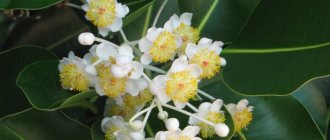Ficus is a plant loved by many gardeners, which has one feature: it only grows upward. Specimens growing in natural conditions can reach a height of forty meters. In apartment walls, owners often have a question: how to prune a ficus tree so as not to harm it. Some novice gardeners argue about how useful such manipulations are for the plant. Experts say that a procedure such as ficus transplantation and root pruning is an integral part of caring for this species.
It allows not only to form a tree of an original shape, but also to rejuvenate the crop.
Pruning and replanting the plant
Before pruning and replanting the ficus, it is necessary to assess the condition of the plant and determine whether it requires preliminary sanitary pruning of dry and non-viable shoots. It is also necessary to remove diseased branches. Sanitary pruning can be carried out at any time.
Proper formation of the plant will allow you to achieve unexpected results. In the skillful hands of a professional, these specimens can grow in the form of an arch or a bush, a trunk or a bonsai. However, each type of ficus has its own specific rules and nuances of the procedure. Therefore, it is very important for beginners in this business to inquire about the characteristics of a particular species before pruning a tall ficus. Before you start pruning, you should decide on the desired result.
You need to know in advance how to properly prune a certain type of ficus so that it has a branched crown and a powerful trunk, or becomes a small lush bush.
Preparing ficus for pruning
Proper crown formation requires knowledge of plant physiology. The ficus produces new shoots from the buds at the top and axils. The axillary ones are located where the petioles are attached to the trunk. Usually, developing much more intensively, the apical bud inhibits the activity of the others. In order to best stimulate their growth, it is important to determine when to prune the ficus and what period will be most successful for the plant’s life cycle. In spring, this flower receives the greatest amount of strength. It is during this period that pruning allows you to realize your ideas more successfully. Some beginners are interested in whether ficus is pruned in autumn and winter. The manipulation carried out at this time will help to achieve one-sided growth of the plant.
When starting the procedure, you need to prepare scissors, a knife or pruning shears. Before pruning an adult ficus, experts advise disinfecting all tools with alcohol. An infection introduced from a dirty instrument can destroy the flower. It is recommended to wipe all sections with a damp cloth until the juice is absorbed. Then this area must be sprinkled with charcoal.
Planting ficus and methods of its propagation
Such a plant can be planted using leaves or shoots. For planting, a cutting is selected, which is cut at an acute angle. It is immersed in warm water for a couple of hours, then the cut area is treated with wood ash. In addition, the flower can be propagated by air layering. Often gardeners are interested in whether it is possible to cut off the roots of a ficus, which can later be used for planting. In order for such roots to appear, an incision must be made at the top of the main trunk or side shoots and a small stick inserted there. This place is covered with damp moss and tied with cellophane. In a month, roots will appear on the branch. For planting, the bottom of the pot is lined with drainage. It can be stone, shards or expanded clay. The drainage layer is covered with moss so that it retains the soil and prevents it from clogging the drainage holes.
General tips for circumcision
The first tip regarding ficus pruning is to be patient and not rush into pruning. You can shape the crown by bending and fixing the stems, as a result of which they do not grow straight, but take the form of arches, spirals, nets or arcs. If, nevertheless, a decision has been made to prune, then it is necessary to start when the plant is young; older plants feel the consequences of such an intervention more acutely and take longer to rehabilitate after it.
When pruning, you need to take into account the physiology of the ficus. New shoots always grow from buds, apical or lateral, which are also called axillary. Axillary buds are easy to notice above the place from which the leaf grows. Removing the apical buds stimulates the growth of lateral buds, which is why cutting off the top of the plant promotes its growth in width.
The cuts are made above the buds and, if the stem is thin, then you can cut straight, but if the stem is thick enough, then it is appropriate to cut somewhat obliquely, at an angle. At the cut site, you can notice the release of juice and it needs to be wiped with a damp cloth until it stops flowing, after which the “wound” is sprinkled with crushed charcoal.
It is not recommended to prune when replanting a plant, it is too stressful. It would be best to prune the ficus in the spring, wait a few weeks, and only then arrange for it to be rehoused.
Pruning rubber ficus
Being a more decorative ficus, this species is more compact and created specifically for home conditions. Most often its height reaches ten meters. It is very important for the owner to know how to properly prune the rubber-bearing ficus so that this variety begins to look more miniature and graceful.
This instance allows you to create any shape. Before pruning the rubber ficus, you need to familiarize yourself with the pruning rules and adhere to them. Even a novice florist can cope with this task. As a result, knowing how to prune a ficus beautifully, you can turn a nondescript flower into a unique home decoration.
Ficus benjamina must be pruned using new shoots that grow from the buds. There are only two such places on the flower - the apex and the lateral bud, which is located in the axils of the leaves. The apical bud is responsible for the rapid upward growth of the plant. At the same time, it is much ahead of the lateral buds, which develop too slowly. Sometimes axillary growth points do not show signs of activity and are in a dormant state. Therefore, it is important to know how to prune a ficus so that it bushes and looks more magnificent.
Removing the top bud will give the flower a chance to develop side shoots, which usually begin to grow in a variety of directions. After such manipulation, the plant can begin to change its crown.
Many beginners in floriculture, starting to work with ficuses, are interested in whether it is possible to trim the top of the ficus so that it stops growing into one shoot. Experts say that if other species fork after this procedure, then the rubber ficus can continue to grow. Before pruning a large ficus, you need to find short internodes on its shoots. A horizontal cut should be made just before the bud if the shoot is green and young. A plant with a hardened trunk is cut in the same place, however, at an oblique.
You should not leave tall stumps, which not only do not look aesthetically pleasing, but can also become a place for fungal diseases to accumulate and multiply.
Nuances of formative pruning
So, if you want your ficus to grow tall, make a vertical cut when pruning. If it is important for you to direct the new young shoots that appear after the procedure to the sides, the cut should be horizontal. This does not cancel the rule stated above that young shoots need to be cut horizontally, and woody shoots at an angle of 45 degrees.
If your ficus has quite a lot of stems (and this, for example, happens with the Benjamin ficus), they must be thinned out from time to time, cutting off the excess. Otherwise, oxygen access to some parts of the plant will be limited. And thickening - you know - is fraught with problems with the health of the flower.
If you want to form a trunk, you will need to trim all the shoots, with the exception of five, which are located on the crown and around it. First decide on the height of the plant, and once your ficus reaches the desired height, start working. First of all, pinch the topmost bud, it is located at the top of the plant. Next, cut and shorten the side branches to form a kind of circle. Professionals are able to turn a ficus into a three-tiered standard tree. There is nothing stopping you from doing this too. But if you are forming a trunk for the first time, you need to start with one tier. And remember: such work can only be done with young plants. If the ficus is already “aged”, do not use it for experiments.
Ficus pruning Melanie
Being one of the varieties of rubber ficus, this specimen also needs pruning. At the beginning of its growth period, this plant is an unbranched trunk with a woody stem. Over time, Melanie begins the process of branching, aerial roots appear, which, reaching the soil, form new trunks. Every owner of this unpretentious species should know how to prune ficus Melanie so that the plant retains its beauty and brightness.
Typically, pruning of this specimen is done at the end of winter. Experts advise how to trim a ficus so that it is fluffy, and emphasize that to do this it is necessary to get rid of the six internodes on top. By cutting off just the top, the grower will not be able to achieve lush development of the branches.
For those who are unsure whether they should prune their ficus this year, there is another method to force the flower to produce side shoots. To do this, the barrel is tilted as low as possible and fixed in this position. After this manipulation, dominance will be transferred to the lateral bud, which is located above the others. The growth of the crown will be stopped, and active growth of lateral shoots will begin.
Activities after pruning
It is known that replanting a plant is an additional incentive for lateral branching to become more intense. However, it should be carried out at least 14 days after pruning. If the ficus is mature, replanting it in this case does not make sense: it will be enough to simply replace the top layer of soil in the pot with a more nutritious one. A few days after the procedure, if the plant has undergone it successfully, it is recommended to start fertilizing with mineral compounds - once a month, after preliminary watering.
After the main pruning, you will need to constantly monitor the growth of young branches, which should be pinched. This will help maintain the crown in a well-groomed and lush condition.
Pruning ficus trees is not an easy, but very interesting task. If it is carried out correctly, the tree will always look decorative, well-groomed and healthy. Since proper pruning is an excellent way to control the tree's upward growth, it will not cause much trouble to the owner and will grow in the direction it is given.
You can also learn how to carry out anti-aging pruning from the video:
How to prune ficus bonsai correctly?
Growing an indoor plant in the bonsai style is a whole science that requires patience, special knowledge and skills. Such compositions look like small works of art. Many experts advise beginners who want to learn this art form to begin their acquaintance with bonsai by growing ficus. This indoor plant is quite unpretentious and has all the qualities for this purpose.
By growing this tree, a beginner will learn how to trim ficus leaves and how to properly care for the plant. It is believed that the most suitable species for creating bonsai will be such species as ficus benjamina, ginseng, panda, ficus sacred, bengal, carika, dark-leaved, retuza and others. It is important for a beginner to learn how to prune a ficus bonsai in order to get a tree with an erect trunk of the correct shape or an original curve in some places. You can also create a plant with an inclined trunk and everted roots. Knowing how to properly trim the roots of a ficus and give it the necessary shape allows you to decorate your home with plants with a forked trunk or a composition of several trees.
To form the desired shape of the crown, you can use special devices that can pull the shoots away from the main trunk, adjust the angle between parts of the plant, and fix the branches in the required position. After some time, all these devices must be removed; the shoots themselves will continue to grow in the given direction.
Creating unusual shapes
The formation of the crown of rubber ficus can be done not only in the shape of an oval or ball. There are other pruning methods that can result in trees with unique shapes for indoor design.
Standard tree
Formation of rubber ficus at home in the form of a trunk:
- The standard form can only be created from unformed ficus without lignification on the trunks.
- Side shoots must be removed regularly until 5 top branches remain.
- When the tree reaches the desired height, pinch the apical shoot, not forgetting to remove the lateral shoots.
- While the stems remain flexible and without bark, it is necessary to organize a support. Keep the trunk upright throughout the growing period.
The stamp can be multi-tiered. To form the crown in this way, divide it into 4-5 parts. From the odd ones, make crown tiers, and from the even ones, make spaces between the tiers, for which the shoots are cut 5-7 cm shorter than the rest.
Fence
A hedge from a rubber-bearing variety of ficus can be made as follows:
- select at least 5-7 seedlings and a long, low container for planting;
- place all seedlings in a tray in one row or in a circle, the distance between shoots should be at least 10 cm;
- the fence is formed from the crown - cut at the same height.
It is important to prune the ficus correctly for the growth of the “fence”. During the procedure, remove shoots from the same parts of the trunk so that the ficus crowns are equally dense and there are no gaps in the “fence.”
Spiral
To form a bonsai in the form of a spiral, it is not the crown that is cut, but the root aerial part and trunks:
- after planting the cutting, place a support - a wooden stick - in the center of the pot next to the stem;
- As it grows, braid the flexible stem around the support;
- trim side branches;
- When a good woodiness of the trunk appears, carefully remove the support.
You can create a spiral from one or more shoots. If you plant 2-4 seedlings at once, during the braiding of the supports it is necessary to place them parallel to each other so that the trunks of one of the trees do not become pinched.
You can give the ficus a pigtail shape as follows:
- select seedlings up to 10 cm long (of the same height);
- the thickness of one should not exceed one and a half centimeters;
- plant the sprouts side by side in the pot so that you can later braid the stems;
- all small branches on the sides are removed, leaving the apical cuttings;
- before you start weaving, moisten the soil so that the stems become flexible;
- periodically braid a braid from the stems, tie the end with wire so that the stems do not start growing in the other direction;
- it is necessary to regulate the strength of the weaving - weakly twisted stems will create gaps in the braid, and too tight weaving can lead to damage to the entire plant;
- To ensure that the holes in the braids are the same, you can place pencils or sticks of equal diameter between them.
To ensure that the shoots grow together into one large trunk and the braid has no gaps, you can remove the bark in small parts at the junctions of the stems. After about 6-8 months, the composition will grow together into one thick trunk.
How to prune ficus Natasha correctly?
This species is one of the shortest among Benjamin's ficuses growing as a shrub. At home, this specimen grows up to forty centimeters. Its trunks are very flexible and thin, so they can be twisted several times, forming one plant with an original crown.
To properly trim ficus Natasha and get a lush green crown, you should wait until the end of February. During this period, leaf buds appear. Experts consider the pruning procedure for this ficus mandatory. Branches that have become too long, thin and weak require pruning. In addition to how to prune a house ficus to create a beautiful shape, you need to take care of its health and remove dry branches, as well as those damaged by scale insects or other pests.
The cut must be made above the kidney. Special garden shears are best suited for this purpose. Thick shoots are pruned obliquely, thin shoots are pruned straight.
Crown formation
As for how to correctly form the crown and side shoots so that the flower looks like a cascade, it was described above.
However, what is needed to create a bizarre waterfall shape is another question. If the ficuses look like vines, then you can make an original composition. To do this, you need to put a fine mesh frame in the pot, which will form an arc, and shoot the shoots directly along it. Over time, the vines will completely entwine the frame, forming a mesmerizing composition. Another thing is the standard. In order to form it, it is necessary to take a still young plant whose trunk is already well formed.
And after that, do the following manipulations:
First, they begin to form the crown of the ficus. In this case, all side shoots are regularly pruned, and several branches are left at the top of the trunk.
After the plant reaches a height of 25-35 cm or 55-90 cm (this is if the flower stands on the floor), trimming the ficus on the sides stops. Next, pinch the top of the plant.
Important! If the standard turns out to be unstable, then you can temporarily place a peg next to the flower to which the flower should be tied.
Ficus Microcarpa - formation features
This specimen at first glance resembles Ficus Benjamin. However, it differs from its relative in that its rhizomes grow very quickly. Thanks to this fact, Ficus Microcarpa becomes an ideal choice for those who are beginning to get acquainted with the art of bonsai. Not being particularly difficult to care for, this specimen will not only attract novice gardeners. It survives well in very humid rooms and is not particularly capricious, although it does not tolerate drafts or sudden temperature changes.
In fact, how to prune Ficus Microcarpa is practically the only thing a beginner needs to learn. To form a lush crown, this tree needs regular pruning several times a year. The best time to prune this type of ficus is spring and summer. During this time, it is necessary to regularly shorten the shoots. Regarding the question of whether it is possible to trim the trunk of a ficus, experts answer unequivocally - yes. This action will increase the thickness and power of the trunk of this small ornamental tree. When forming a bonsai tree from this type of ficus, it is recommended to shorten each branch after 6-10 leaves appear on it, leaving only three or four.











